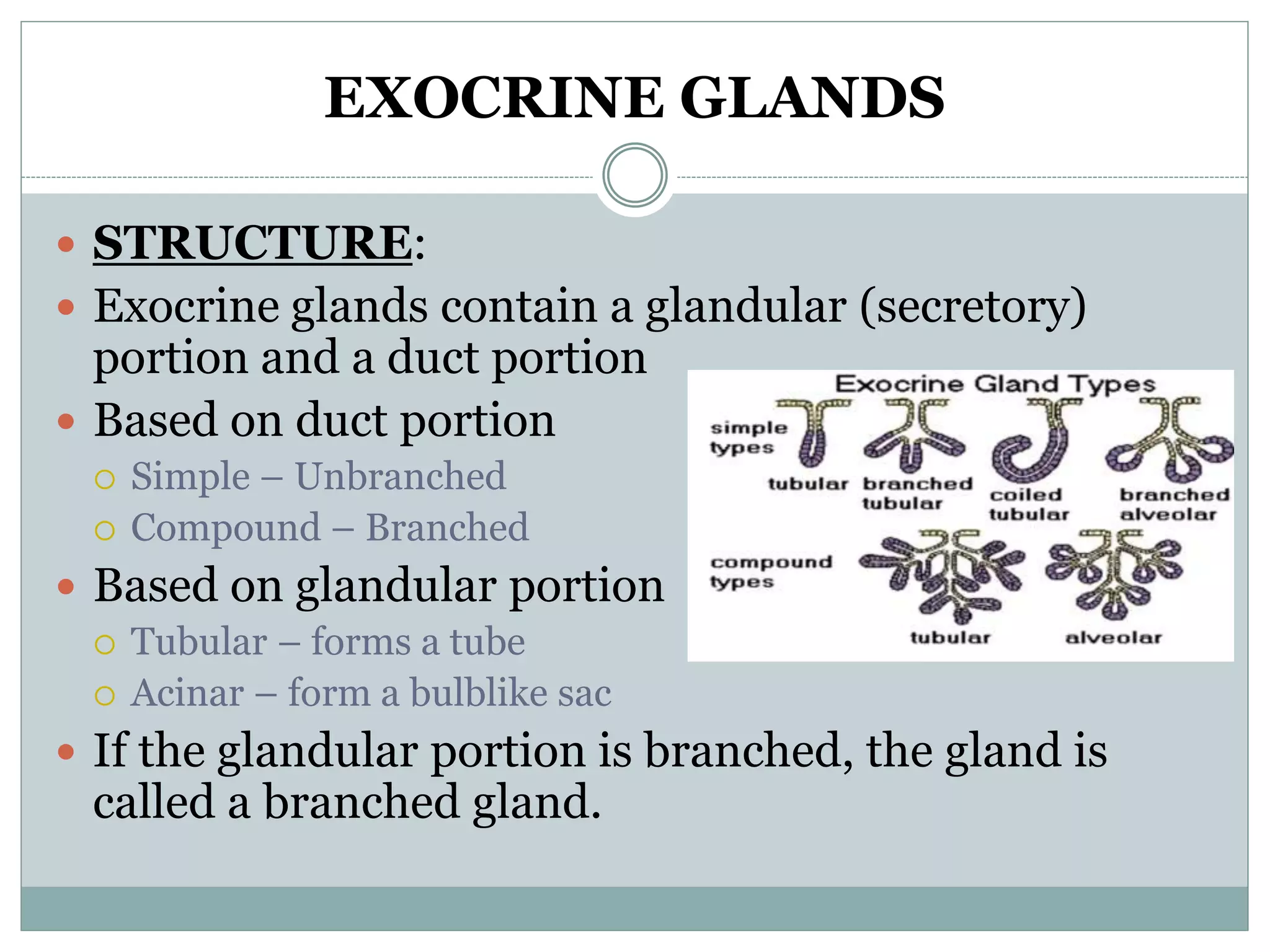This document provides information on the four basic tissue types found in the human body: epithelial, connective, muscular, and nervous tissue. It focuses specifically on epithelial tissue, describing its characteristics, classification, and major types. Epithelial tissue is classified based on cell layers, cell shape, and surface modifications. The major epithelial tissue types are simple and stratified squamous, cuboidal, columnar, transitional, and glandular epithelium. Glands are further classified based on their structure, secretory mechanism, and secretory products.




































